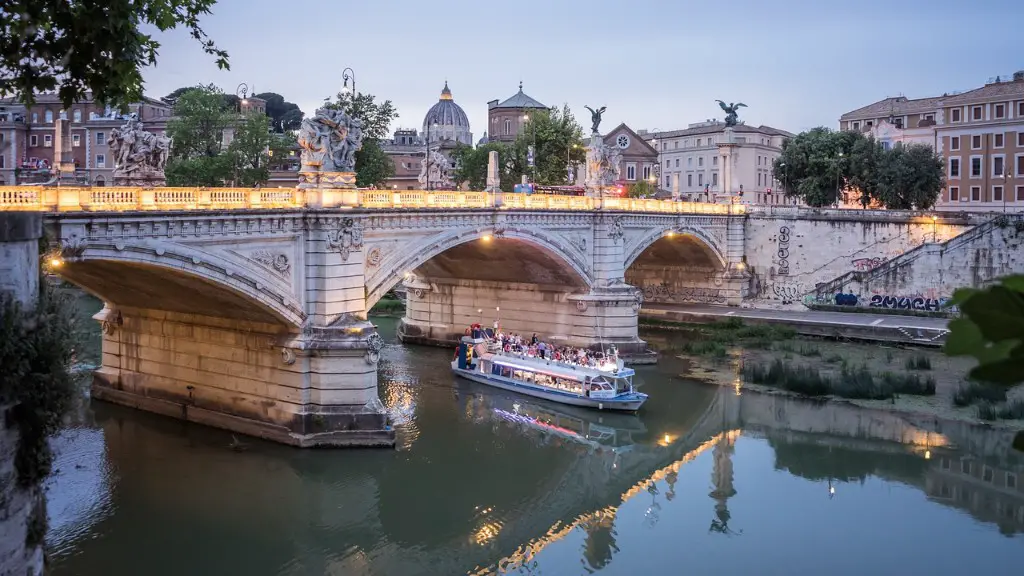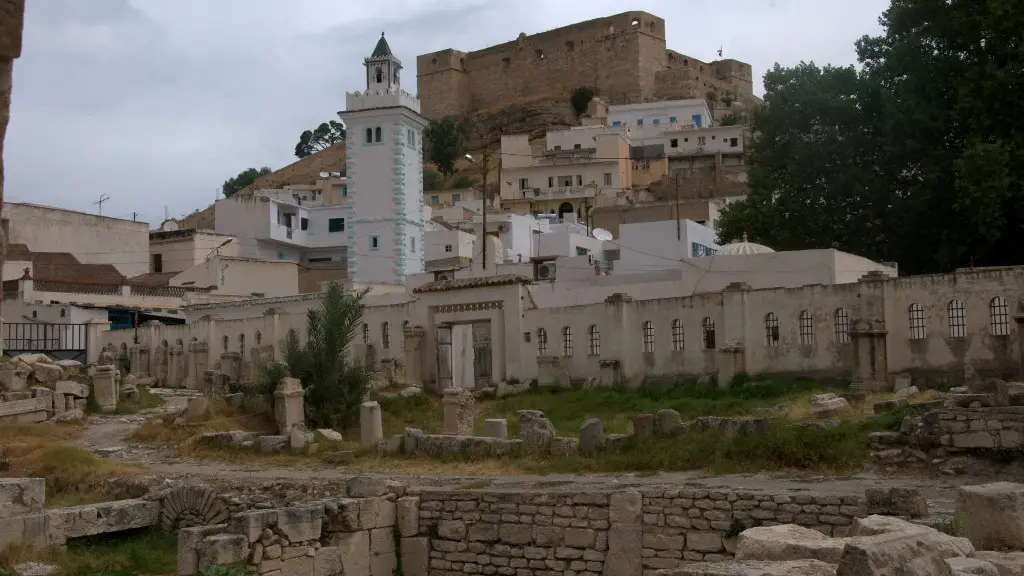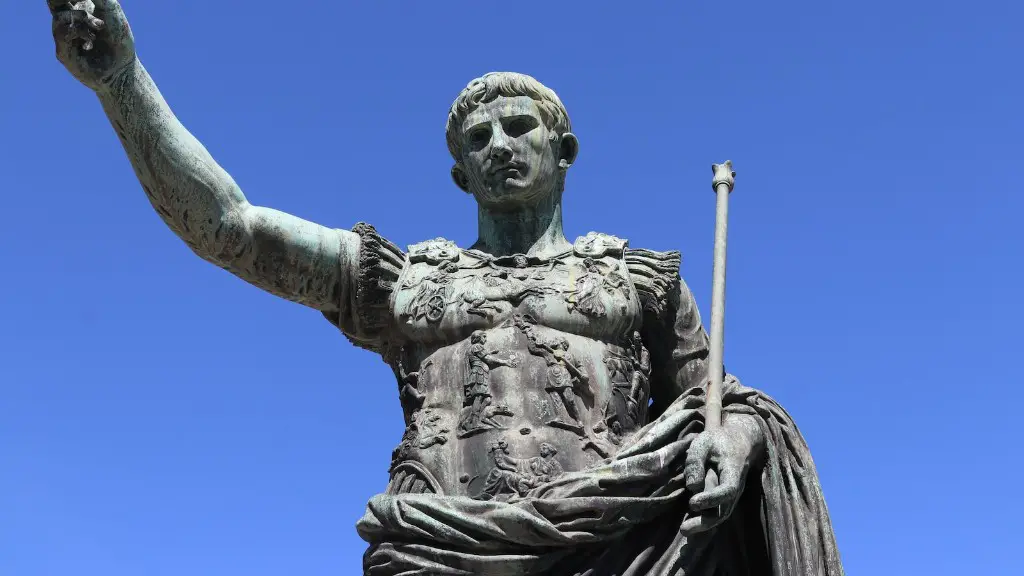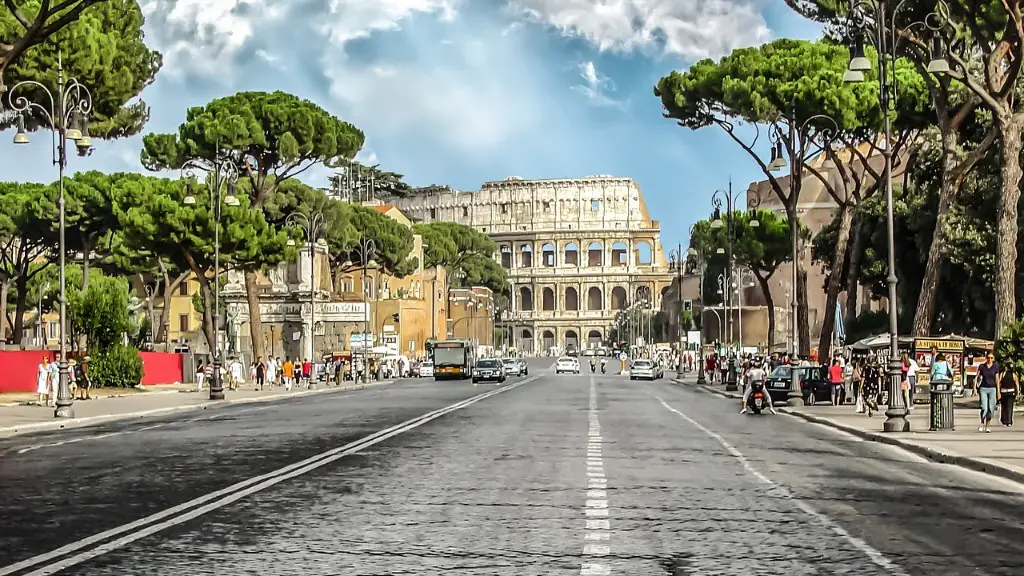The terrain around and in Ancient Rome had an imposing impact on the culture, society, and politics of the city. Ancient Rome rose and fell with the rocky terrain of its homeland, the Italian peninsula. While the soil of the Tiber River basin was incredibly fertile and provided Rome with prime agricultural soil and access to essential resources, the other regions surrounding Rome helped protect the city from invasion and provided settings for war, fortification, and imperial advances. Sitting at the center of the Mediterranean Sea, Ancient Rome bordered the Mediterranean Sea and hilly terrains, allowing for political and commercial developments.
The Appennine Mountains run the entire length of the Italian peninsula, and the upper and lower hills and mountains helped to protect Rome from outside invasions. When an enemy reached the gates of Rome, they had to pass through multiple terrains, fortifications, and strongholds, which provided Rome with an added layer of formidable defence. This terrain also contributed to the building of cities along the river banks, contributing to the large population and wealth of the city.
Along the Mediterranean Sea, the Mediterranean climate provided a mild climate throughout the year. Not only did this allow for trade and fishing, but it also provided Rome with a location perfectly suitable for sustaining its growing population. This coast was filled with ports and provided access to exotic materials from distant lands, contributing to the grandeur of Rome. Moreover, the nearby harbors heightened the influence and presence of Rome in the Mediterranean.
In the hinterlands, the terrain presented a unique set of challenges for the Romans. As Rome continued to conquer and expand, the military forces had to traverse the uneven terrains to reach their respective regions. The presence of swamps, even plains, rivers, and high hills made logistic efforts hard and gave the dangerous edge to the Roman military successes. This hinterland terrain thus provided Rome with an additional layer of protection but also presented a difficult challenge to Roman forces.
The terrain around Rome had a lasting impact on the development of the city. Without the hills and mountains that protected the city, its greatness would have been significantly hindered. Moreover, the presence of harbors and the climate of the Mediterranean allowed for prosperous trade and enabled the Romans to spread their influence and power in the Mediterranean Sea. The hinterlands also provided the Romans with an opportunity to expand the city, but also presented a dangerous edge to the Roman forces. All in all, the terrain around Ancient Rome has been an enormous influence on the city and its imperial accomplishments.
Politics and Trade
The ports of the Mediterranean were advantageous to Roman politics and trade. The presence of the ports enabled Rome to further its political power, as well as facilitate trade. With access to ports came increased commerce with areas throughout the Mediterranean, resulting in the ability to acquire goods, money, and slaves. This facilitated the political and financial development of Rome.
The rivers of the area were also beneficial, as they provided Rome with access to trade goods and a means of expanding its military power. Rome was able to transport goods from one area to another, as well as move military forces quickly over shorter distances. Also, the rivers could be used as defensive moats that could be utilized in defending the city. This meant that any offensives would have to traverse rivers in order to make any advances, thus foiling any possible invasion attempts.
The terrain of the area also provided Rome with additional protection against outside forces. The hills and mountains that provided a fortress for Rome, made invasion difficult and provided an additional layer of safety for the city. This safety allowed the people of Rome to focus on furthering their political goals, and also permitted the expansion of their military power.
The terrain of the area also presented an opportunity for expansion. From the mountains to the ports, Rome could expand its territory and build cities or settlements that would further the expansion of their power. This allowed Rome to grow in a number of ways, and take advantage of the natural resources and the surrounding areas.
Agricultural Impact of Terrain
The terrain of the area was beneficial to the cultivation of crops, which provided Rome with wealth and food. Due to the location of Rome, access to the Mediterranean Sea and to navigable rivers, crops were able to be brought to market. This enabled the Roman population to not only provide for themselves, but also to trade and make a profit.
The hills and mountains of Ancient Rome provided the area with necessary water sources, as well as spacious areas perfect for the growing of crops. This allowed the people to farm successfully, contributing to both their economy and their diet. Moreover, the soil in the Tiber River basin was favorable for the cultivation of various agricultural products, providing Rome with an increased amount of food and also money.
In addition, the mild climate of the area allowed for long growing seasons which further contributed to the agricultural success of the area. The combination of soil and climate, as well as access to water, all enabled the area to produce crops, providing a steady source of revenue and food.
The terrain of the area thus enabled the people of Rome to farm and produce agricultural products that allowed them to acquire wealth and live comfortably. With access to areas best suited for their lifestyle, the people of Rome were able to utilize their skills to survive and to ultimately launch one of the most powerful empires the world had ever seen.
Military Influence of Terrain
The hills and mountains of the Italian peninsula covered much of the area surrounding Rome and provided an additional obstacle to invasion. This terrain acted as both a psychological and physical barrier for invading armies, as it provided an area for defensive measures and also psychological fear for the invading forces.
The terrain in the area also allowed the Roman military to traverse the land quickly, allowing them to build military strongholds and conduct campaigns in the hinterlands. This terrain also enabled Roman forces to take strategic military positions, providing them with an advantageous position in any conflict.
The terrain was also conducive to the construction of roads and fortifications, which further enabled the Roman military to conquer a wide area. The combination of the terrain and defensive fortifications enabled the Romans to extend their power and to protect their borders successfully.
The terrain of the Italian peninsula thus provided Rome with an extra layer of security through its physical and psychological deterrence. Moreover, Rome could use the terrain to their advantage, constructing roads and fortifications that enabled quick military movements and triumphs.
Geographic Impact
The geography of the area played a key role in the development of Ancient Rome. First and foremost, the area was situated near the Mediterranean Sea, allowing for access to needed resources, resources for military campaigns, and access to trade routes. This positioning made it possible for Rome to acquire goods and materials from a wide area and to maintain a prosperous economy.
The Appennine Mountains also provided Rome with a formidable defense against any invading forces. With the rivers, hills, and mountains acting as a series of natural barriers, the forces of Rome could easily hold back anyone attempting to invade the city. This protection allowed the people of Rome to focus on their political and economic goals.
The terrain of the area also presented an opportunity for Roman success. The presence of hills, mountains, rivers, and the Mediterranean Sea allowed for the construction of roads that would help Rome in its military advances, as well as its economic endeavors. With the ability to traverse the terrain, Rome could build network of roads connecting cities and creating a trade network that further enabled Rome to expand.
The geographical terrain of the area thus provided Ancient Rome with an advantage, both strategically and economically. By taking advantage of the terrain around them, Rome was able to become one of the most successful empires in history.
Conclusion
The terrain of Ancient Rome played an important role in the development of the city, both politically and economically. By taking advantage of the terrain, Rome was able to see success, both in terms of military conquests and in terms of building a flourishing empire. From the Mediterranean Sea to the hills of the Italian peninsula, the terrain enabled the people of Rome to protect itself, expand, and become a global force.





